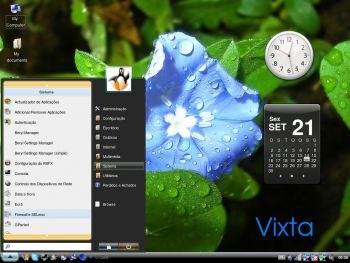EL SEGUNDO, Calif., March 20, 2007 -- The world's first computers whose architecture can adopt different forms depending on their application have been developed by Raytheon Company (NYSE: RTN).

The architecture of the MONARCH processor with key elements identified
Dubbed MONARCH (Morphable Networked Micro-Architecture) and developed to address the large data volume of sensor systems as well as their signal and data processing throughput requirements, it is the most adaptable processor ever built for the Department of Defense, reducing the number of processor types required. It performs as a single system on a chip, resulting in a significant reduction of the number of processors required for computing systems, and it performs in an array of chips for teraflop throughput.
"Typically, a chip is optimally designed either for front-end signal processing or back-end control and data processing," explained Nick Uros, vice president for the Advanced Concepts and Technology group of Raytheon Space and Airborne Systems. "The MONARCH micro-architecture is unique in its ability to reconfigure itself to optimize processing on the fly. MONARCH provides exceptional compute capacity and highly flexible data bandwidth capability with beyond state-of-the-art power efficiency, and it's fully programmable."
In addition to the ability to adapt its architecture for a particular objective, the MONARCH computer is also believed to be the most power- efficient processor available.
"In laboratory testing MONARCH outperformed the Intel quad-core Xeon chip by a factor of 10," said Michael Vahey, the principal investigator for the company's MONARCH technology.
MONARCH's polymorphic capability and super efficiency enable the development of DoD systems that need very small size, low power, and in some cases radiation tolerance for such purposes as global positioning systems, airborne and space radar and video processing systems.
The company has begun tests on prototypes of the polymorphic MONARCH processors to verify they'll function as designed and to establish their maximum throughput and power efficiency. MONARCH, containing six microprocessors and a highly interconnected reconfigurable computing array, provides 64 gigaflops (floating point operations per second) with more than 60 gigabytes per second of memory bandwidth and more than 43 gigabytes per second of off-chip data bandwidth.
The MONARCH processor was developed under a Defense Advanced Research Project Agency (DARPA) polymorphous computing architecture contract from the U.S. Air Force Research Laboratory. Raytheon Space and Airborne Systems led an industry team with the Information Sciences Institute of the University of Southern California to create the integrated large-scale system on a chip with a suite of software development tools for programs of high value to the Department of Defense and commercial applications. Besides USC major subcontractors included Georgia Institute of Technology, Mercury Computer Systems and IBM's Global Engineering Solutions division.
Raytheon Space and Airborne Systems is the leading provider of sensor systems giving military forces the most accurate and timely information available for the network-centric battlefield. With 2006 revenues of $4.3 billion and 12,000 employees, SAS is headquartered in El Segundo, Calif. Additional facilities are in Goleta, Calif.; Forest, Miss.; Dallas, McKinney and Plano, Texas; and several international locations.
Raytheon Company, with 2006 sales of $20.3 billion, is an industry leader in defense and government electronics, space, information technology, technical services, and business and special mission aircraft. With headquarters in Waltham, Mass., Raytheon employs 80,000 people worldwide.
 New top-level domain ".asia" is available for registration. Registration and control are entrusted to nonprofit organization DotAsia Organization Limited which consist of members from China, India and Japan.
New top-level domain ".asia" is available for registration. Registration and control are entrusted to nonprofit organization DotAsia Organization Limited which consist of members from China, India and Japan. Toshiba announce one more massive recall again, not a good sign for company.
Toshiba announce one more massive recall again, not a good sign for company.













 Yesterday,
Yesterday, 




 Intel plans to launch three quad-core processors on Monday, covering two Xeons for lower-end servers and one mainstream model for desktop computers, sources familiar with the plan said.
Intel plans to launch three quad-core processors on Monday, covering two Xeons for lower-end servers and one mainstream model for desktop computers, sources familiar with the plan said.
 Business travellers will soon have another option for connectivity when they are on the road. Start-up Autonet Mobile and car rental giant Avis are partnering to offer renters a device that will provide laptop users with WiFi access on the road. You can take "on the road" literally in this case, as the device is designed to create a WiFi hot spot accessible from within 100 feet of the car.
Business travellers will soon have another option for connectivity when they are on the road. Start-up Autonet Mobile and car rental giant Avis are partnering to offer renters a device that will provide laptop users with WiFi access on the road. You can take "on the road" literally in this case, as the device is designed to create a WiFi hot spot accessible from within 100 feet of the car. 
